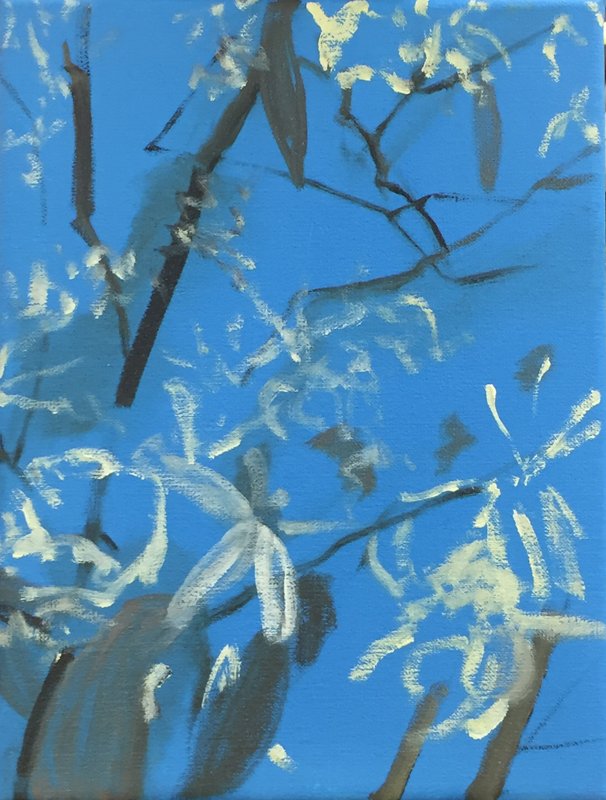Hashtag Contemporary Landscape
When I post on Instagram, I often use #contemporarylandscape to align myself with other painters of a similar mindset. When I have to explain what I meant by that, I begin with what I don't mean, or what I want to distinguish myself from. Nineteenth century landscapes, as much as I love them, come from landscape experienced in a different time, one that I can only postulate. "Maine landscape" paintings are often literal and imply a wish to capture a scenic moment, so that's not what I'm looking for either. And though I paint non-objective, or non-realist paintings, I never think of my work as abstract.
So. Here's what I do paint - the living world. I paint in dialogue with what's happening around me, wherever I may be. A robin chatters as the light changes before the rain starts. I hear traffic pass by on Route One. Garlic scapes rest on the table in the studio, cosmos and sweet peas bloom in the garden. A woodchuck has been into the lettuce. Tomorrow it will be hot again. I read.
I've been absorbing a group of essays and podcasts in Emergence, a quarterly publication whose recent issue focuses on my second most favorite topic, language. "The Language of the Master," an essay by Paul Kingsnorth, takes a close look at left brain vs. right brain, and the human proclivity for naming things in order to control them. Calling a desert uninhabited is a ploy to make it uninhabitable except for human economic benefit.
Naming has practical value too. It's useful to know the difference between a tick and a spider, both of which have eight legs. Or to distinguish multiflora rose (invasive) from its better-behaved relative, bristly rose. So I name things not to exit left into political or scientific controversies, but just as an aid in restoring health and diversity to "my" patch of Maine, the place where I currently live,
As a painter, I try to be more than a namer. I approach the living world as something I am living in, enmeshed in. This has been my point of view from day one, and more and more, I would like to make paintings offer a lived experience for viewers. #contemporarylandcape also takes into account my position in the Anthropocene, as I work toward a visual language that attends to the details of plants, to the presence of time passing, to the possibility that humans do make a difference, can make conscious choices that are beneficial for all life forms.
